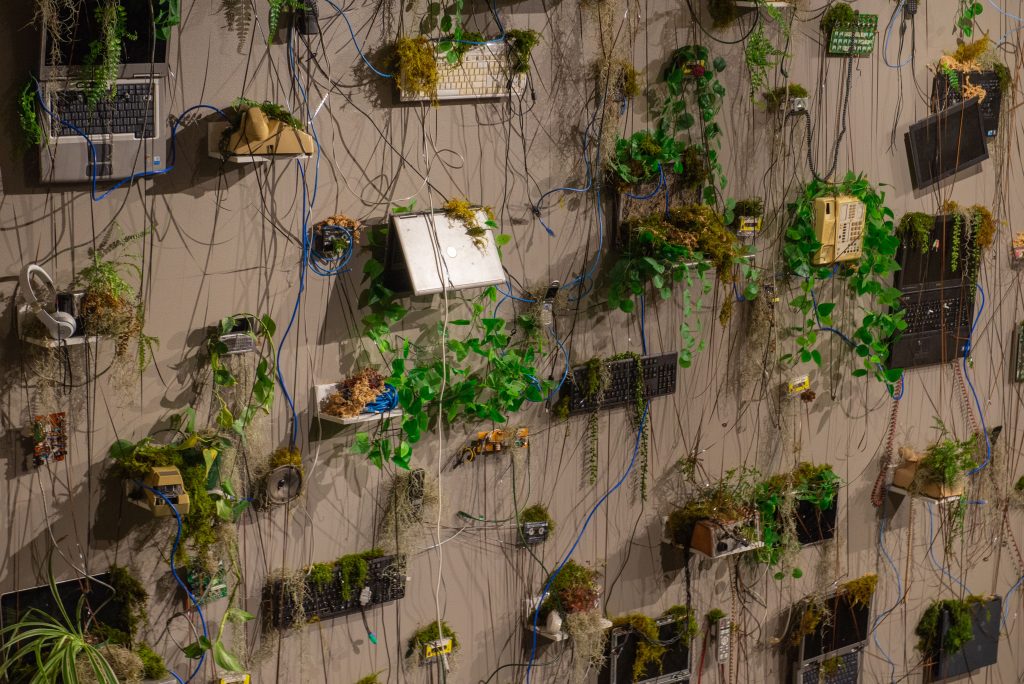“The World After Us: Imaging techno-aesthetic futures” features a unique curation of mixed media, including sculpture, prints, installations and photography, meant to provoke awareness about electronics use and its subsequent waste. Artist Nathaniel Stern designed the exhibition not only to bring this topic to light but to present suggestions about how technology and nature might coexist in the future, even beyond human existence.
Stern’s subject matter combines technology with greenery, conveying both concerning and innovative possibilities. There is an underlying sense of optimism to these concerns which is displayed by the way in which nature breaks through the physical objects. Rather than condemning humanity, there is optimism in the fact that he is able to communicate these issues so openly and reimagine a life where both nature and technology form meaning from one another. “The Wall After Us” is a main focus of the exhibition and a relevant example of this idea. In this installation, a towering wall features various electronic devices with plants growing out of them, expanding throughout and overlapping with other objects. These integrated vines symbolize the way in which ecology works to ensure stability among living things, and the hope that electronic devices can take part in these processes in the future.
Other notable uses of physical electronic devices and greenery are seen by prints made from phones turned into ink and melted-down Macs turned into tools. In Stern’s photography, we see depictions of phones, Apple watches and other objects with grass, plants, mushrooms and other organisms growing out of them. It is through these playful depictions that the viewer is able to develop their own questions and concerns about what their role has been in preventing or contributing to electronic waste. Further thoughts are sparked by seeing the technology smashed and broken down, causing us to notice the materialism of what we might consider high-value items and the lack of relevance that these items can quickly have in our lives.
Not only does this exhibition use aesthetically specific designs to captivate the audience, but the work itself and actions of Stern also aimed to assist with bettering the future of electronic waste. With the help of geological scientists, as well as thermochemical engineers and plant scientists from Cornell University, Stern created pieces that suggested potential solutions to these issues. One innovative decision was to make “server farms,” which are gutted electronics with nature replacing and growing out of the removed pieces. Stern collected waste from his neighborhood, planted indigenous greenery within and then handed them out to people. This led to his realization about the surplus of waste, and subsequently, the artistic decision to make features like “The Wall After Us” to be of such grand scale — a size that presents itself as much larger than humans. This unique form of reuse visually illustrates the depth of possibilities that the future holds and allows us to take responsibility in envisioning and making choices that allow for a hopeful outcome, despite the mark that humans and technology have previously made on the planet. Memorable and visually outstanding, “The World After Us: Imaging techno-aesthetic futures” is a great exhibition to see if you are interested in viewing meaningful and engaging works of art.
“The World After Us: Imaging techno-aesthetic futures” will be on display at the Binghamton University Art Museum from now until March 10.



